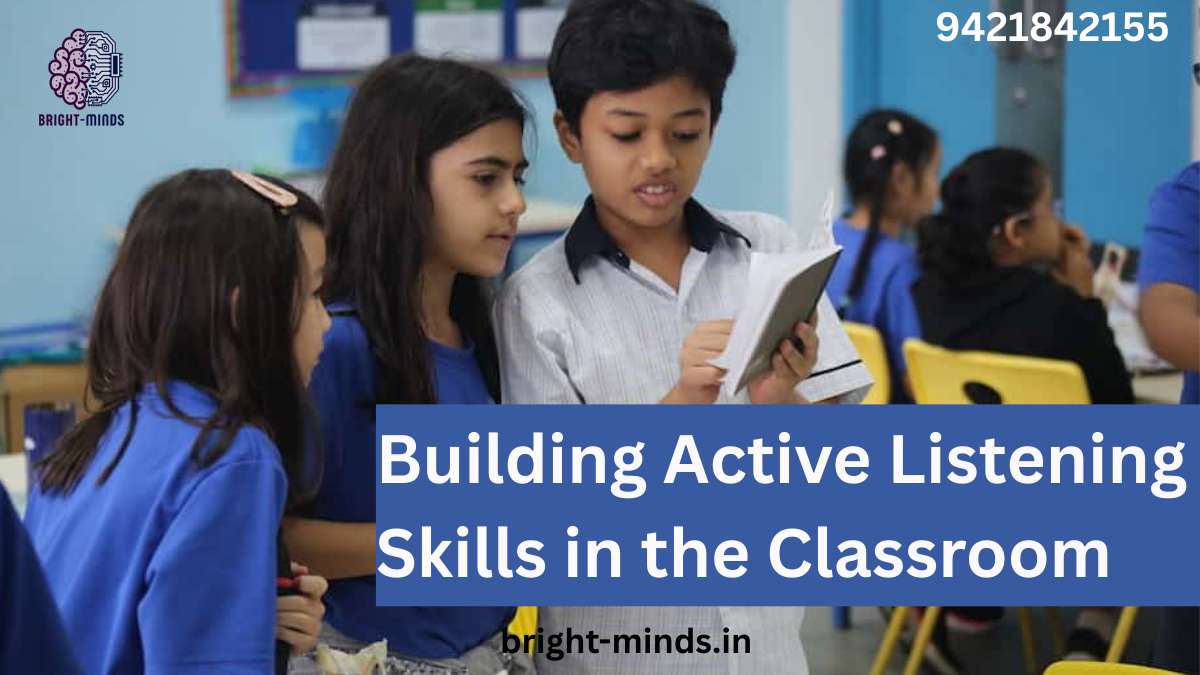In today’s fast-paced, screen-saturated world, one essential skill is quietly slipping through the cracks—active listening. We often hear about improving communication, but what about truly hearing what someone else is saying?
For children in the classroom, active listening is more than just a nice-to-have. It’s a life-changing skill that shapes how they learn, interact, and grow—not just academically but socially and emotionally. And the best part? Like any other skill, active listening can be taught, practiced, and mastered.
Whether you’re a teacher trying to cultivate better classroom engagement, a parent supporting your child’s learning, or a company employee looking to understand the foundations of effective communication, this blog is for you.
🎧 What is Active Listening?
Active listening is the process of fully concentrating, understanding, responding, and then remembering what is being said. It’s not just waiting for your turn to speak—it’s about being present and intentional.
In the classroom, active listening helps students:
- Grasp instructions clearly
- Retain more information
- Build empathy and social skills
- Develop critical thinking
- Create a respectful learning environment
Teachers who model and encourage active listening set the stage for a more connected, engaged, and successful group of learners.
💡 Why It Matters in Today’s Learning Environment
In an era where attention spans are shrinking and distractions are growing, active listening is more vital than ever. Studies show that the average attention span of children is just 8–12 minutes, and that number decreases in digital learning environments.
This isn’t just a classroom issue. According to industry insights:
- Employers say effective communication is one of the top soft skills they seek in candidates.
- The global EdTech market is rapidly expanding, integrating tools that promote interactive learning—where listening is key.
- Schools worldwide are embedding social-emotional learning (SEL) into their curriculum, with active listening at its core.
By helping students develop this skill early, we prepare them for success not only in school but in the workplace, relationships, and everyday life.
🏫 Real-World Applications of Active Listening in Education & Beyond
Let’s look at how active listening transforms experiences in real life:
- In Classrooms:
Students better understand lessons, ask thoughtful questions, and engage more meaningfully in group discussions. - In Teams:
Children who learn to listen well collaborate more effectively in group projects and debates. - At Home:
Active listeners show more empathy towards family members and are less reactive during conflicts. - In the Workplace:
Professionals with strong listening skills often rise faster in leadership roles, manage teams better, and foster inclusive cultures.
👩🏫 Practical Tips to Build Active Listening Skills in the Classroom
You don’t need high-tech tools to teach listening. Here are easy, impactful ways to start:
✅ 1. Model Active Listening
Teachers should make eye contact, paraphrase what students say, and avoid interrupting—setting the tone for respectful communication.
✅ 2. Use the “Listen and Repeat” Game
Ask students to repeat or summarize what a classmate just said. This reinforces focus and accountability.
✅ 3. Introduce Visual Listening Cues
Create posters with phrases like “Eyes on speaker,” “Hands still,” and “Think about what you hear.”
✅ 4. Encourage Note-Taking
Simple note-taking exercises help students stay engaged and improve retention.
✅ 5. Incorporate Role-Playing
Have students act out scenarios requiring careful listening—like giving and following directions.
✅ 6. Create a Safe Listening Environment
Allow every student to speak without fear of judgment or interruption. Encourage curiosity and questions.
✅ 7. Use Technology Mindfully
Leverage EdTech tools like classroom audio stories, podcasts, or listening comprehension apps—but balance them with peer interaction.
📈 Market Trends & Industry Insights
According to a 2025 forecast by HolonIQ, the EdTech industry is set to cross $400 billion, with a focus on platforms that support communication skills, emotional learning, and student engagement.
Leading educational platforms are now embedding interactive audio lessons, student feedback tools, and active participation modules to make listening a core part of the learning experience.
Employers across industries—from healthcare to tech—are integrating communication training into employee development programs, highlighting the long-term value of listening skills learned in childhood.
👥 For Corporate Employees: Why This Matters to You
You may not be in a classroom—but you’re part of the conversation.
If you’re a corporate employee:
- Consider volunteering in school-led reading or storytelling sessions.
- Join CSR initiatives that support communication skill-building in youth.
- Apply active listening at work to improve team dynamics and customer interactions.
Listening is not a passive activity. It’s a muscle. And it grows stronger with intentional practice—whether you’re 9 or 39.
💬 Final Thoughts: Listening Today, Leading Tomorrow
Active listening isn’t just a classroom behavior—it’s a lifelong advantage. It fosters better learners, kinder classmates, more empathetic leaders, and stronger communities.
Also Read:
https://bright-minds.in/unlocking-word-meaning-for-class-ukg-english-to-hindi/

